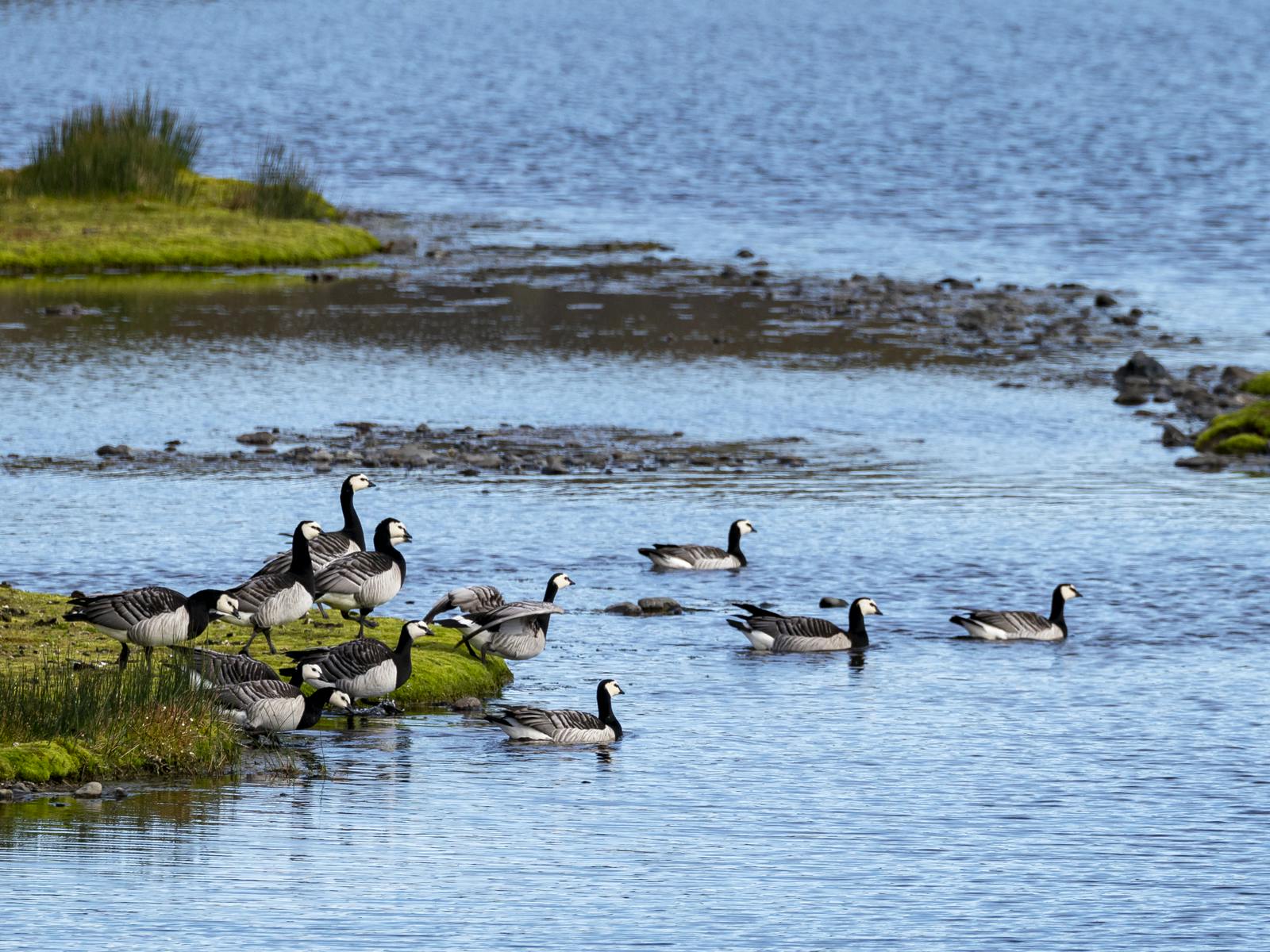
Spot the Barnacle Geese
The Barnacle Goose
The barnacle goose (Branta leucopsis) is a waterfowl (Anatidae) belonging to the black geese genus (Branta), which is often related to the New World in the West. In contrast, the grey geese (Anser) are related to the Old World in the East, but these two genera do mix in their most northern habitat. The barnacle geese is a high Arctic species with three distinguished populations, one breeding in Northeast Greenland, another at Svalbard and the third in North Russia.
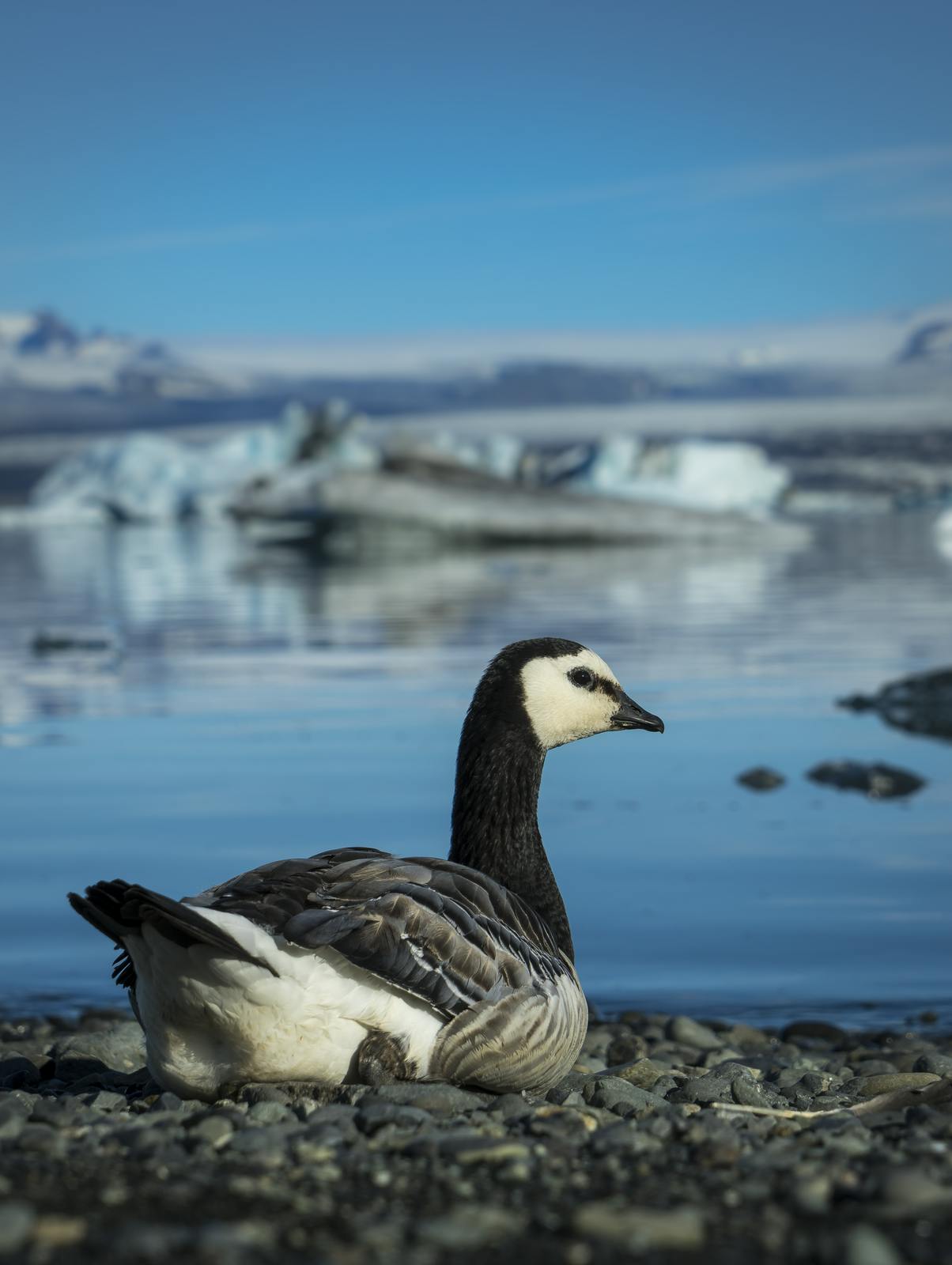
To learn more about Icelandic nature and wildlife, visit the Perlan Museum in Reykjavík. Here, you can dive deeper into every aspect of what Iceland's wonders have to offer. This interactive museum is a great experience for all ages, giving you a unique opportunity to experience Iceland in one place. Read more about the exhibitions Perlan Museum has to offer here.
Distinctive Features of the Barnacle Goose
The barnacle goose is a medium-sized bird weighing 11.7 - 22 kgs (2.6-4.9 lbs) and is 58 - 70 cm (22.8-27.6 in) in length. Like other geese, the sexes look alike, but the male is a little bit bigger. The barnacle goose has a black neck, throat, and breast but a white belly. Its forehead, chin and patch are white or cream-yellow. The wingspan is 132 - 145 cm (52-57 in), and both wings and the back of the bird are greyish. Juveniles have a brownish colour on the back and a darker head than adults, but both have black feet and bill.
The Barnacle Goose Migration Unveiled
The barnacle goose is a migratory bird that arrives in large flocks early in spring. At the beginning of April, the first birds appear in South Iceland and start feeding before they continue their migration to Northeast Greenland. The Icelandic population originated from that barnacle population.
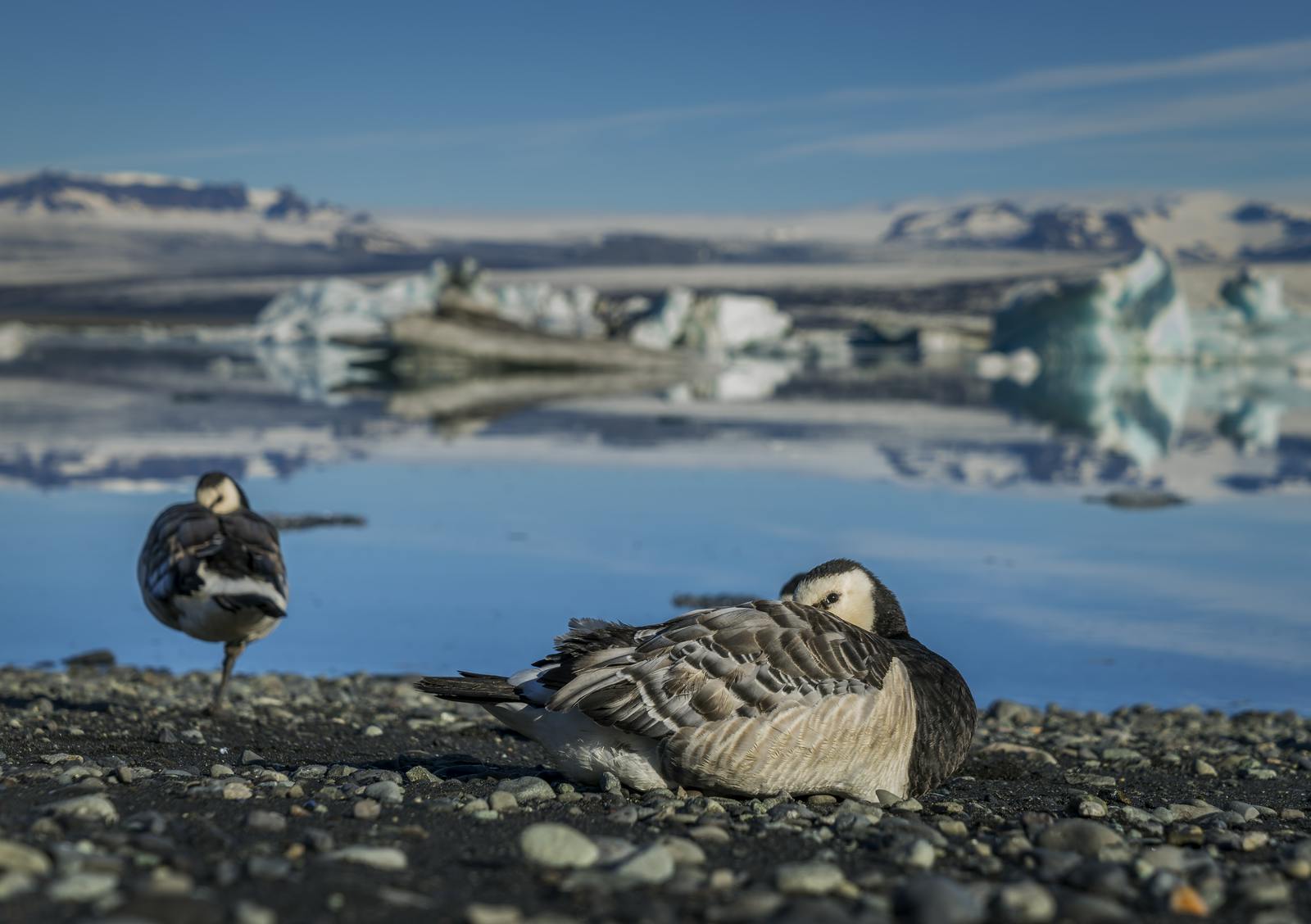
The male stands guard and protects the female while she is feeding and accumulating energy for the upcoming nesting season. It is estimated that in spring, about 70% of the Greenland population is located at Húnavatnssýsla and Skagafjörður in Northwest Iceland. The Greenland barnacle population has been increasing in recent years, but the reason is not obvious. It might be a stricter protection of this species in Greenland rather than better hatching success. In Greenland, minimum population size is estimated to be 40 thousand breeding pairs, so about 80 thousand birds are located in Iceland in the fall, where they mix with the small local barnacle population.
The Icelandic Barnacle Goose
The Icelandic barnacle goose starts egg-laying in the middle of May, which is about four weeks earlier than birds that migrate to Greenland. The clutch is 3-6 white eggs that weigh about 992 grams or 3.5 oz each. The nest, which is a bed on the ground, is well insulated and made of the bird's droppings and surrounding material.
The Icelandic barnacle nests on small islands and islets surrounded by deep water, which is the best protection against the main predator, the arctic fox (Vulpes lagopus, previously Alopex lagopus). The female incubates, but both sexes care for the goslings. The incubation period is about 25 days, and the goslings leave the nest after hatching. Both goslings and adults feed on alpine bistort (Bistorta vivipara) and other vegetation from their surroundings.
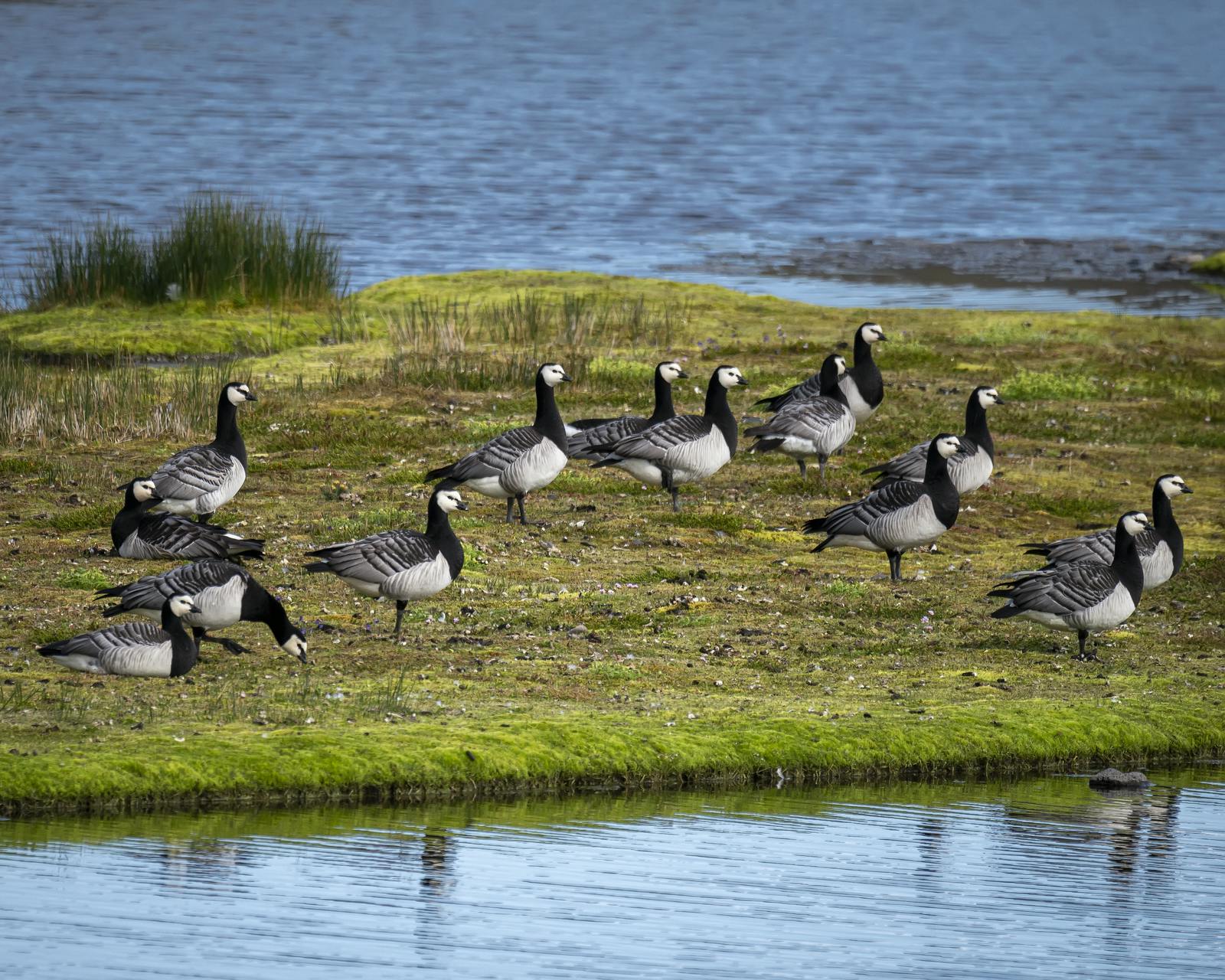
The Development of the Icelandic Barnacle Population
In September, barnacle geese from Greenland arrive and spread in the southern highlands, where they feed on berries and other vegetation. They stop in "Skaftafellsýslur "in South Iceland, where they are seen in farm- and wetlands before they migrate to their wintering grounds in Great Britain.
The development of the Icelandic barnacle population is an interesting story. The birds take a stopover in Iceland when migrating to their breeding grounds in Greenland each spring, where they nest in steep cliffs. It happened that pairs did not finish their journey to Greenland but nested in Iceland instead.
First Sight of the Barnacle Goose in Iceland
The first documentation is from Hörgárdalur in the north in 1927 and then from Breiðafjörður in the west in 1963. The barnacles nested at Breiðafjörður for 20 years, but after that, the population is mostly found in the southern part of the country. Population size increased very slowly, and in 2005, about 20 nests were found in Iceland.
The barnacle goose got established in East-Skaftafellssýslu, and the population increased fast, with over 500 nests observed in 2014. Breeding in South Iceland has increased rapidly, and in 2019, the number of nests in Skua Island at Jökulsárlón exceeded 1000, but many smaller colonies are found around the country. The barnacle goose is now considered an Icelandic breeder, and the population is estimated to be around 2000 breeding pairs.
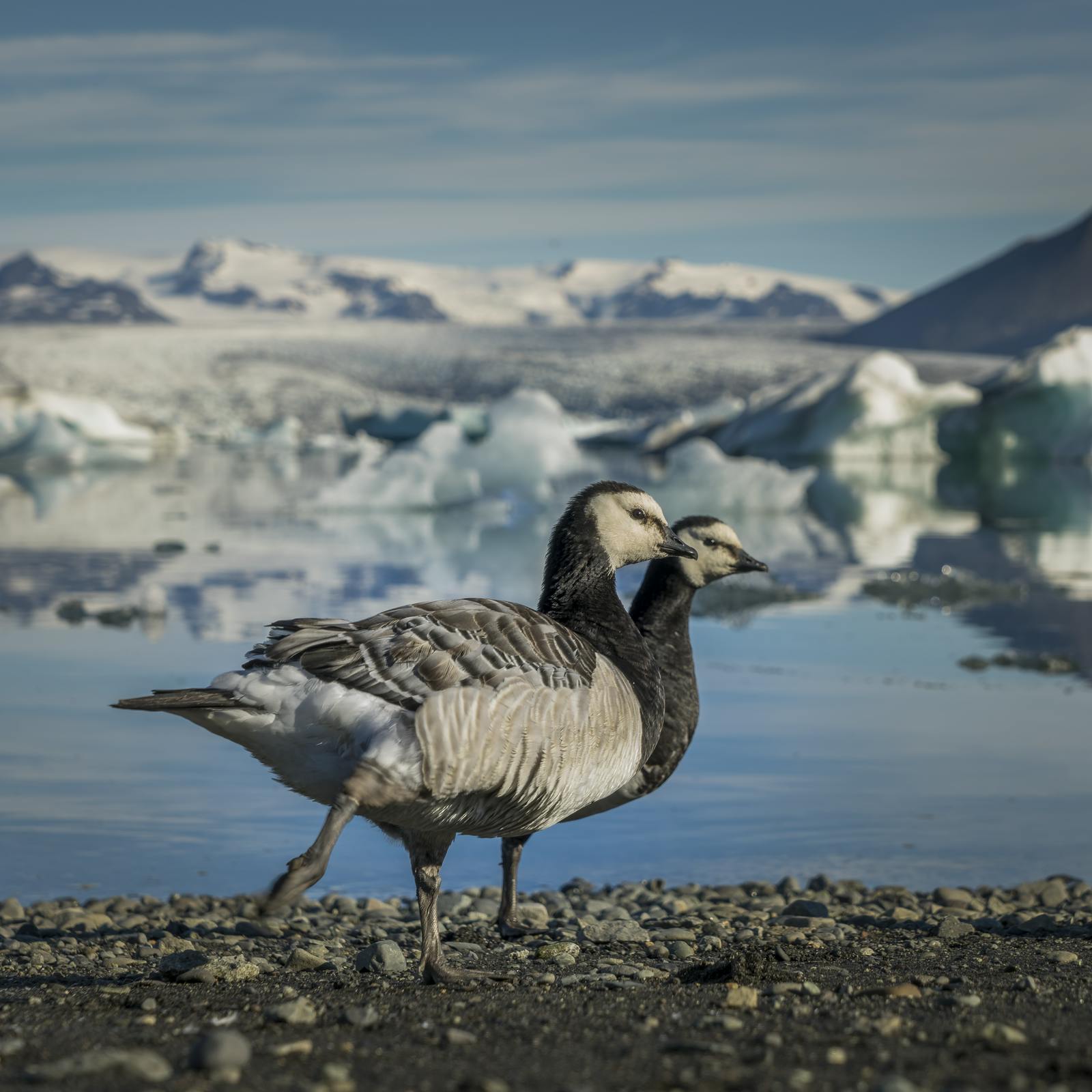
Five Arctic Facts About the Barnacle Goose
- Does the honk of the barnacle goose sound like a small dog's barking?
- Barnacle geese are only hunted in Iceland: yearly, about 2000 birds are shot.
- In Greenland, the barnacle goose usually nests in steep cliffs to avoid foxes, but in Iceland, on small islets surrounded by deep water.
- The barnacle goose is the only black goose (Branta) that breeds in Iceland, but its aunt, the Brent goose (Branta bernicla) stops over during migration to Greenland each year.
- Old legends say that the barnacle goose does not hatch from an egg but originates from driftwood, and the barnacle species, Lepas anatifera, is in its first growth stage.
Popular articles
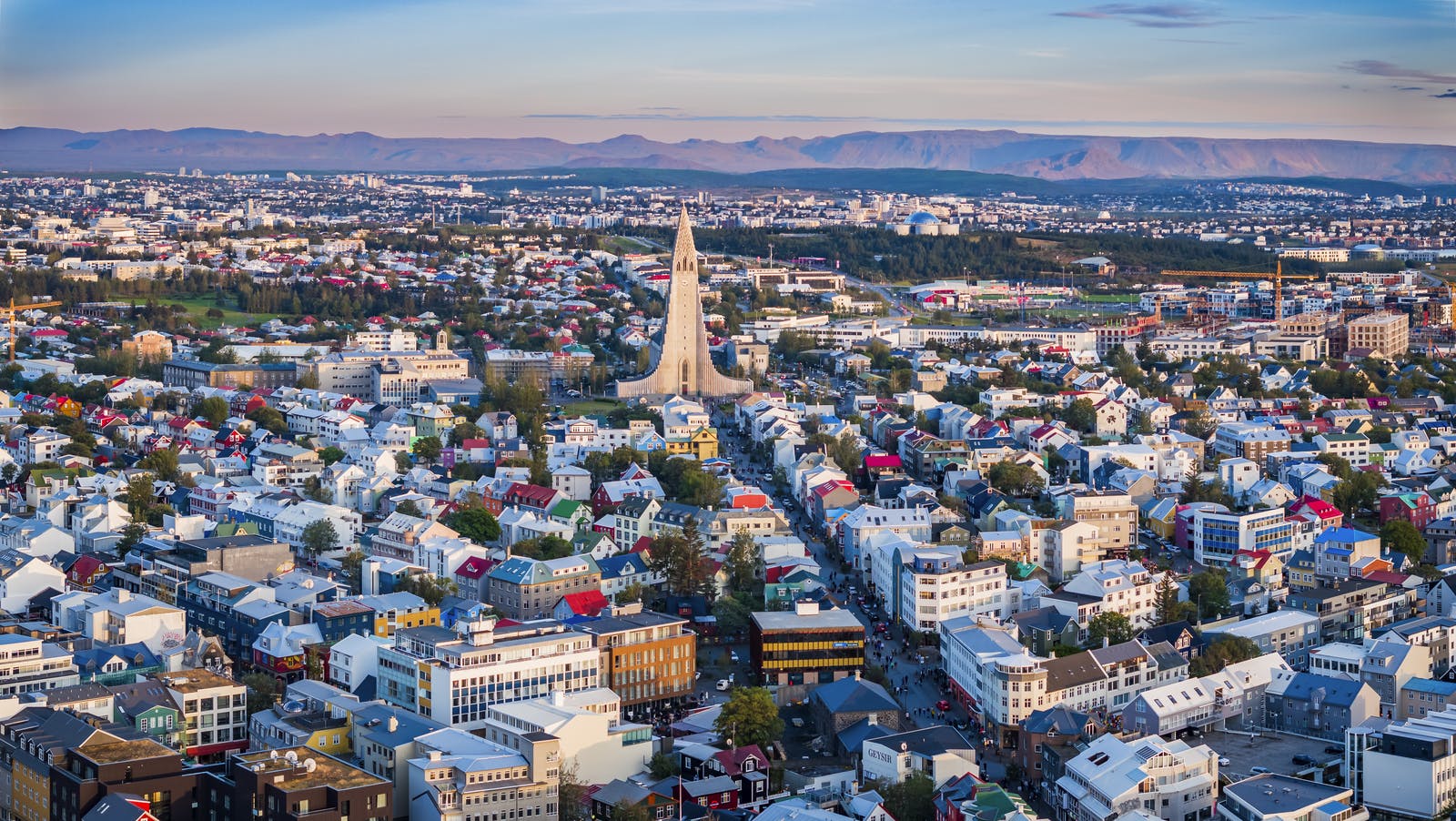
Things To Do In Reykjavík In June
Discover the best of Reykjavík in June: midnight sun adventures, vibrant festivals, and unique cultural experiences. Make your trip unforgettable!

The New Eruption May 29th 2024 near Reykjanes!
From rising magma at Svartsengi to an eruption on May 29th, 2024! See all updates of the volcanic activity on Iceland's Reykjanes Peninsula Sundhnúkur Crater Row.

Sundhnúkagígar Crater Row Volcanic Eruptions
The anticipated volcano has erupted in the Reykjanes Peninsula, the site is being called Sundhnúkagígar Crater Row. See the historic insights on the seismic activity and volcanic eruptions.

Earthquakes in Iceland
Earthquakes in Iceland are a fact of life. Each year, hundreds of small tremors shake the earth, a reminder of the country’s position on a tectonic plate boundary.

Volcano Museums and Exhibitions in Iceland
If you don't manage to visit an actively erupting volcano in Iceland - Experience its force at one of these excellent volcano museums and exhibitions in Iceland.

Top 10 Places To See the Northern Lights in Iceland
You can see the northern lights across the country, but some spots are more suitable than others. Find the best place to see the northern lights in Iceland.

Ice Caves From Reykjavik
Travel beyond the capital for a closer look at an ice cave under one of Iceland’s glaciers. If you can’t spare the time, experience Perlan’s ice cave in Reykjavik.